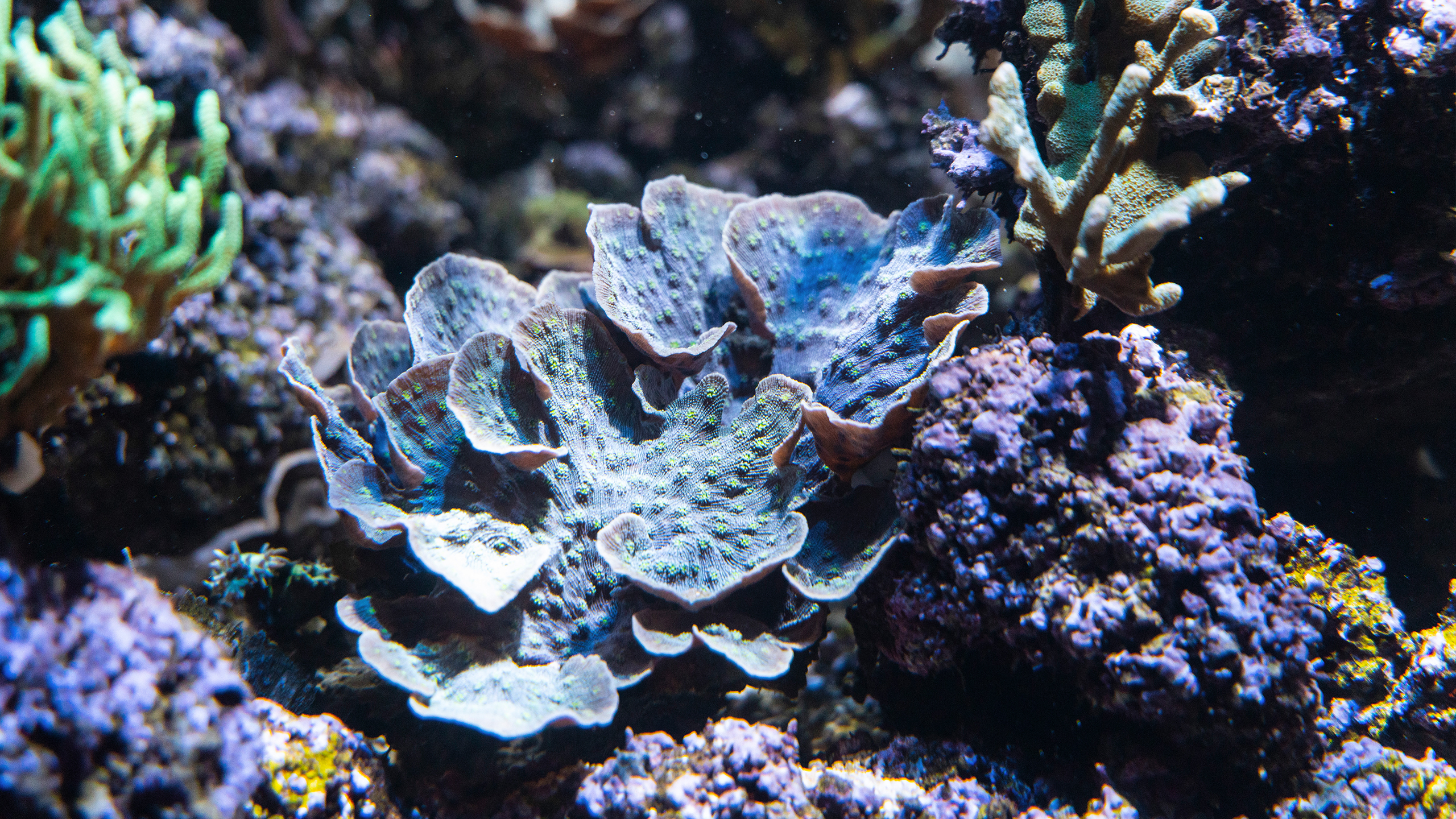
Corals
Anthozoa
A coral reef is comprised of corals and their calcium carbonate exoskeletons. Coral reefs are mainly found in warm, shallow marine areas between the Tropic of Capricorn and the Tropic of Cancer. Coral reefs are significant habitats with a rich biodiversity. In addition to anemones and corals, the reefs provide an important habitat to various fish, such as surgeonfish, clownfish, and seahorses as well as algae, sponges, octopuses, and sea turtles. Coral reefs are also favored by sea cucumbers, starfish, and sea urchins as well as shellfish, such as crabs and shrimp.
The tissue of a coral polyp houses algae. The close, symbiotic relationship between polyps and algae benefits them both. Coral offers algae nitrogen and phosphorous and a suitable place to grow in shallow water where it can be reached by sunlight. In turn, algae releases oxygen and nutrition its host can use.
Conservation
Coral reefs are delicate ecosystems that are susceptible to global warming, human activity, pollution, and UV radiation. Reefs have thus become endangered habitats. The Great Barrier Reef off the east coast of Australia is the largest and the best-known coral reef in the world.
Humans are the most significant threat to coral reefs. Reef ecosystems are sensitive to pollution, such as oil spills, and acidification. Overfishing, particularly when dynamite is used, tourism, and harvesting of coral by diving cause damage to the reefs. Maritime transport and pollutants from rivers alongside increasing nutrient levels can also upset the delicate balance of coral reefs. Global warming is another substantial threat that affects the reefs in many ways. Thus, curbing global warming is important for the survival of coral reefs as well.
When the temperature of the water rises, the colorful algae living on the surface of corals lose their pigment or are expelled, which leads to coral bleaching. Even a rise of 1–2 degrees in temperature can result in coral bleaching, and an increase of 3–4 degrees can cause the destruction of an entire reef. With the rise in sea levels caused by melting ice caps, the surface of the reef will no longer receive enough sunlight that is necessary to algae. This reduces the photosynthetic capacity of algae, which leads to coral bleaching and may ultimately destroy the entire reef.
Tropical house Amazonia
Classes
Ceriantharia
Hexacorallia
Scleractinia